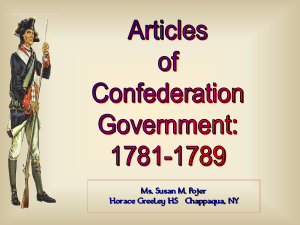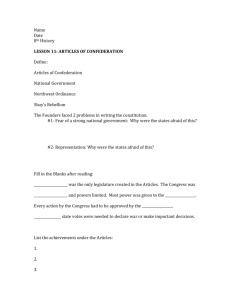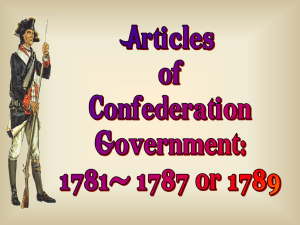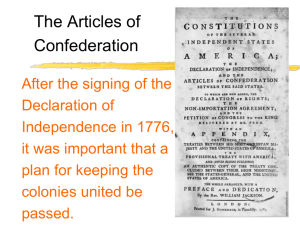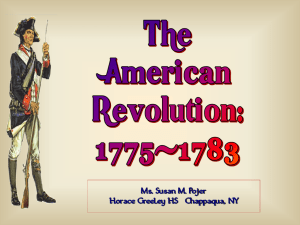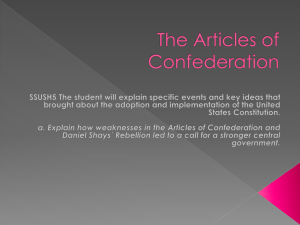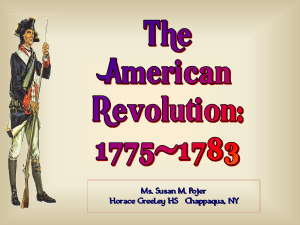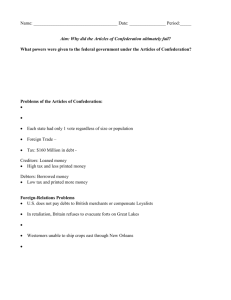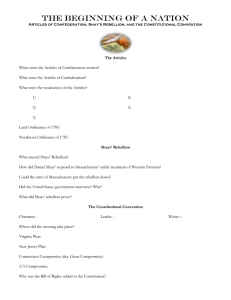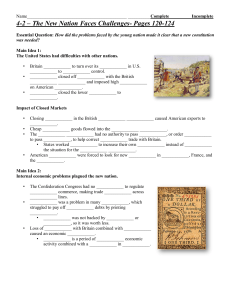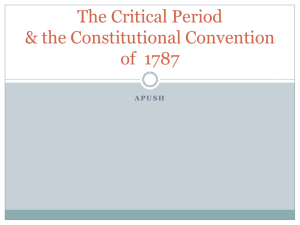Annapolis Convention (1786) 12 representatives from 5 states
advertisement
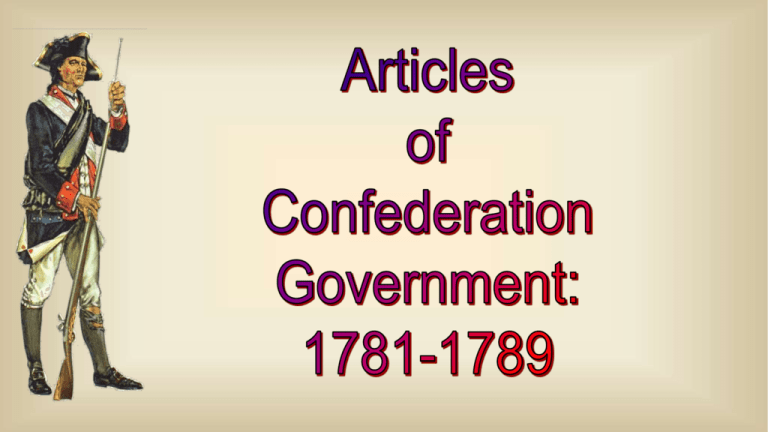
Wholesale Price Index: 1770-1789 Federalist vs. Anti-Federalist Strongholds at the End of the War Weaknesses of the Articles of Confederation A unicameral Congress [9 of 13 votes to pass a law]. 13 out of 13 to amend. Representatives were frequently absent. Could not tax or raise armies. No executive or judicial branches. State Constitutions Republicanism. Most had strong governors with veto power. Most had bicameral legislatures. Property required for voting. Some had universal white male suffrage. Most had bills of rights. Many had a continuation of stateestablished religions while others disestablished religion. Occupational Composition of Several State Assemblies in the 1780s Indian Land Cessions: 1768-1799 Disputed Territorial Claims Between Spain & the U. S.: 1783-1796 State Claims to Western Lands Land Ordinance of 1785 Northwest Ordinance of 1787 One of the major accomplishments of the Confederation Congress! Statehood achieved in three stages: 1. Congress appointed 3 judges & a governor to govern the territory. 2. When population reached 5,000 adult male landowners elect territorial legislature. 3. When population reached 60,000 elect delegates to a state constitutional convention. The United States in 1787 American Exports, To & From Britain: 1783-1789 Annapolis Convention (1786) 12 representatives from 5 states [NY, NJ, PA, DE, VA] GOAL address barriers that limited trade and commerce between the states. Not enough states were represented to make any real progress. Sent a report to the Congress to call a meeting of all the states to meet in Philadelphia to examine areas broader than just trade and commerce. Shays’ Rebellion: 1786-7 Daniel Shays Western MA Small farmers angered by crushing debts and taxes. Shays’ Rebellion: 1786-7 Shays’ Rebellion: 1786-7 There could be no stronger evidence of the want of energy in our governments than these disorders. -- George Washington
